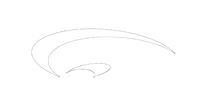|
What are Swim Fins?
The use of Swim fins (also known as ‘flippers’) has increasingly become part of any swimmers training regime over the last couple of decades. If there is one item to purchase to help you with your swim training, it’d definitely a pair of Swim Fins! Wearing fins on your feet, allows you to propel yourself with far greater speed and power to your leg kick and also increases the fun of rocketing through the water. Integrating the use of swim fins into your training can help prefect many elements of your swimming stroke and also your overall technique (including the correct body position and ‘height’ in the water). We always use Swim Fins during our Strictly Swimming lessons in London, so please ask our coaches advice before splashing out on a pair. The Benefits of Swim Fins 1. Improves your kick technique Using swim fins will work your upward leg kick and downward leg kick by adding resistance to these movements. If your leg kick is the weakest part of your stroke, swim fins will increase the resistance of your kick on the water as you perform each movement. This added resistance will work your quad muscles (on the downward kick) and hamstrings (on the upward kick), making you move faster and more efficiently. Your leg kick will connect with the water on a much greater scale and you will find that your hips are no longer sinking. If you feel that you go nowhere with a kick board in your lessons or training, try using swim fins to create a narrow and fast flutter kick to propel you through the water. 2. Improves your overall stroke technique The extra propulsion and speed in the water created by your swim fins will allow you to focus and develop specific elements of your technique that you are concentrating on. This extra speed and stability will help you practice more advanced drills to a higher level and can target your technique with much more accuracy and ease. 3. Develops correct body position Many novice swimmers and triathletes find it difficult to maintain good height in the water (swimming as close to the water’s surface or above). Swimming with fins increases speed in the water which in turn increases a higher body position to the water surface. So you will feel like you are zooming across the surface of the pool as your swim fins teach you how to swim on top of the water. 4. Reduces stress on your shoulders Although swimming is a moderately low-impact sport, after a while in training, your shoulders may experience quite a bit of stress. The repetitive movements of each stroke can lead to shoulder aches or even damage if proper care is not performed during your workout. Swim fins lower the impact on your shoulders (during your workout and even during lessons) as your leg kick increases proportionally within the whole stroke. 5. Help increase strength and endurance As mentioned, swim fins alleviate stress on the shoulders and the arms which allows you to swim for longer periods of time, increasing your muscle strength and endurance in the process. Working the specific muscle groups of your legs, using swim fins is among one of the top ways in developing kick strength during your swimming. 6. Improves ankle flexibility Finally, using swim fins requires your ankle to move through a greater range of motion than you make regularly kick during your stroke. Some swimmers are naturally flexible in their ankle joint, while others may find this difficult to relax and stretch during the ‘flick’ of your foot when kicking. Swim fins reinforce proper kick mechanics, allowing you to develop ankle flexibility faster than training without fins. Types of Swim Fins
Overall swimming fast is much more fun, so why not mix up your training by including some training sets whilst wearing your swim fins. There are a number of different ways that you can vary your workout with fins, so let our Strictly Swimming coaches in London help you develop a new training regime in the water whilst using them! Comments are closed.
|
AUTHORPaul started competing in swimming from the age of 8 and eventually went on to represent his country all over the world. During his time at University, Paul specialised in Aquatics and the Biomechanics of Swimming and produced numerous theses on swimming performance. TOPICS
All
ARCHIVES
June 2024
|
Let's connect!
Copyright © 2024 Strictly Swimming


